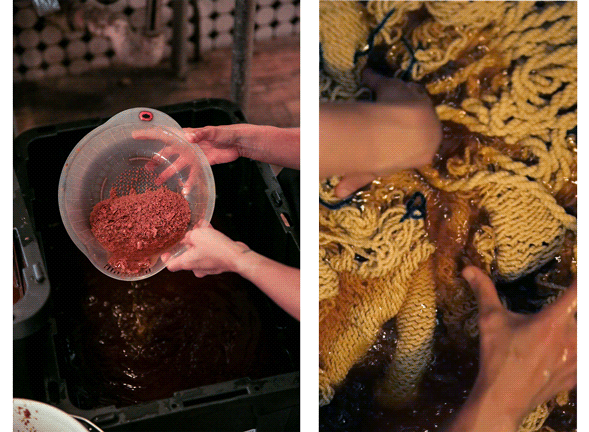Maria Elena Pombo’s studio feels more like a lab than a designer’s showroom. On the left, there are shelves full of water bottles from all over the world. On the far end, there’s a giant box that houses avocado seeds. There are also tongs and burners on top of the table, as well fabric scraps and containers filled with natural dyes. A delicious scent emanates the room – a smell that comes from the avocado seeds, onions, tree barks, and plants she uses to dye the clothes she creates.
As a designer, Pombo is committed to changing the way the fashion industry looks at natural dyes. Yes, it’s a lengthy and slow process, but to the Venezuela-born designer, it’s a way to reduce the environmental impact of the fashion industry, which the world’s second-largest polluter (only behind fossil fuels).
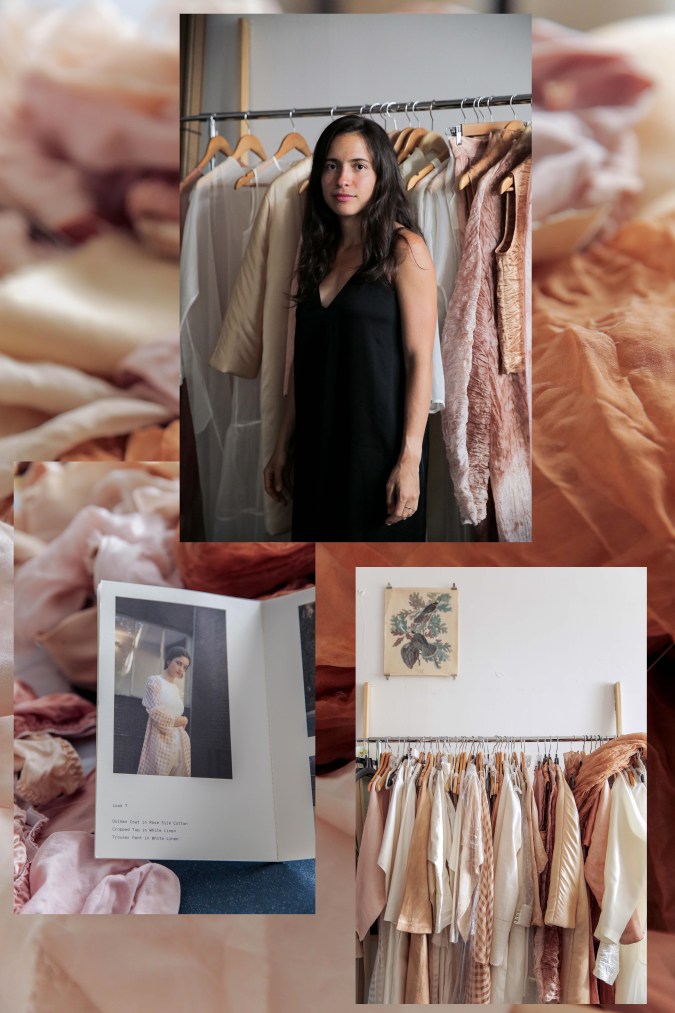
The designer, who did a postgraduate program in fashion design from Parsons The New School for Design, opened her studio in 2016. But she has experimented with natural dyes since 2014. Her incursion into this field was accidental. When her partner, Griffin Moore, created his tote bag line, Native Outpost, the two set out to find the right shades of color to feature in the collection. But after they grew frustrated with the fabric and color options available, they turned to natural dyes to DIY it.
Her clothing line, Fragmentario – a name derived from the Spanish expression “por partes” – was born two years later. The line’s aesthetic is minimalistic and ethereal, focusing more on the textile work than the shapes. “It’s more about what I can do with the fabrics and the colors than what the clothes look like,” Pombo tells me during a recent visit to her studio. “The styles remain pretty much the same in each collection.”
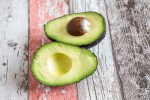
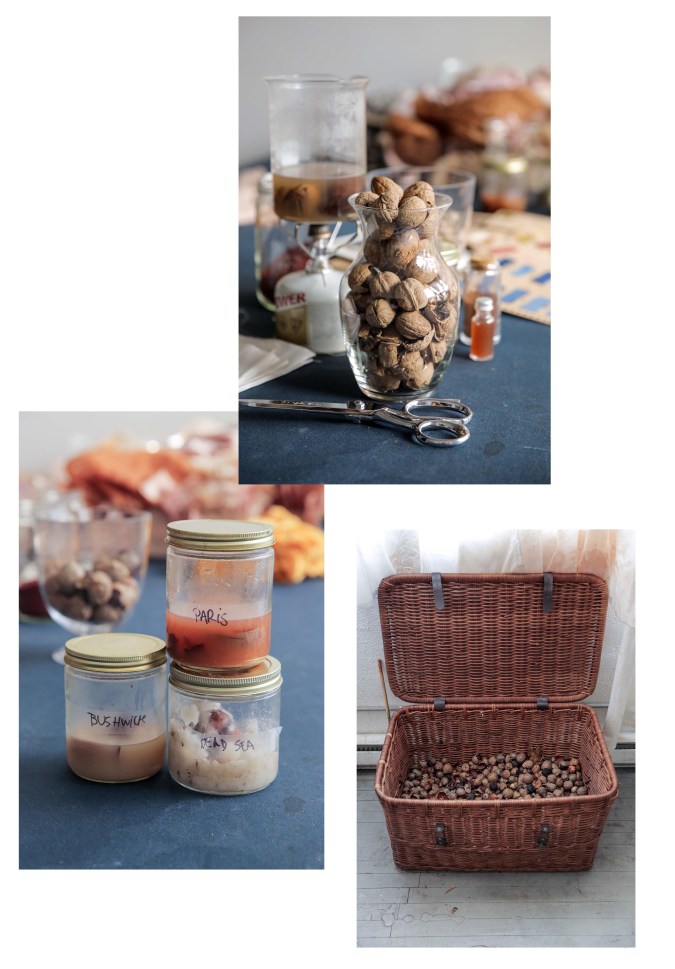
Yet, her clothes are far from regular, as Pombo puts thousands of hours developing original colors and perfecting techniques that allow her to work completely free of chemicals. And now she can rattle off facts – such as how tannin is suitable to dye fabrics – on command. “Avocado seeds are good for that and most tree barks are excellent for natural dyes,” she says. Although, she sometimes uses whole pieces of seeds or bark in her dyeing process, she’s also experimented with ground materials.
Her focus on developing dyes from avocado seeds is instrumental in her work for Fragmentario. Her last collection Ahuactl – focused on developing pink colors from avocado seeds – also served as a commentary on the increasing demand of aguacates in the United States. “Avocados are something so conventional in our home countries,” Pombo says. “But it has so much more potential than just as a food.” In the last 20 years, consumption of avocados in the United States has increased by 443 percent, with incremental environmental, economic, and political challenges imposed to Latin American countries, such as Mexico and Peru.
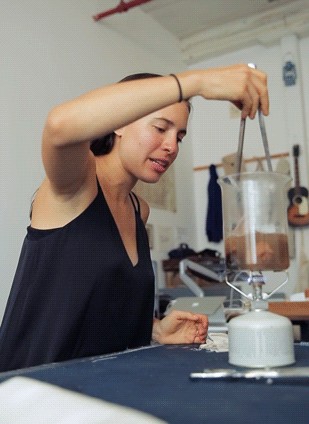
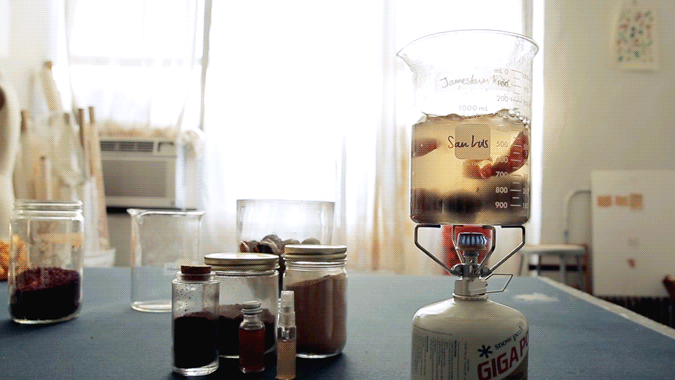
Pombo, who studied engineering in Venezuela, compares the process of natural dyeing to making tea. First, she prepares the fabric to absorb the dye by submerging it in water. Then, she boils the material she’s using in hot water to extract its dye. Finally, she soaks the fabric in the dyed water to complete the pigmentation process. Pombo explains that the process varies depending on the size and material of the piece.
Since 2014, the Bushwick-based designer has also studied the impact the kind of water she uses has on the dyeing process. For example, water from Paris, which has high levels of mineral, delivers strongercolors than water from New York City. She first learned of these discrepancies during a trip to Paris. She noticed the colors came out differently than they had in NYC. Her French friends made the connection to the water, when Pombo noticed her hair was increasingly more dry during her trip. A lightbulb went off for Pombo, who realized she could manipulate colors depending on the water she used.
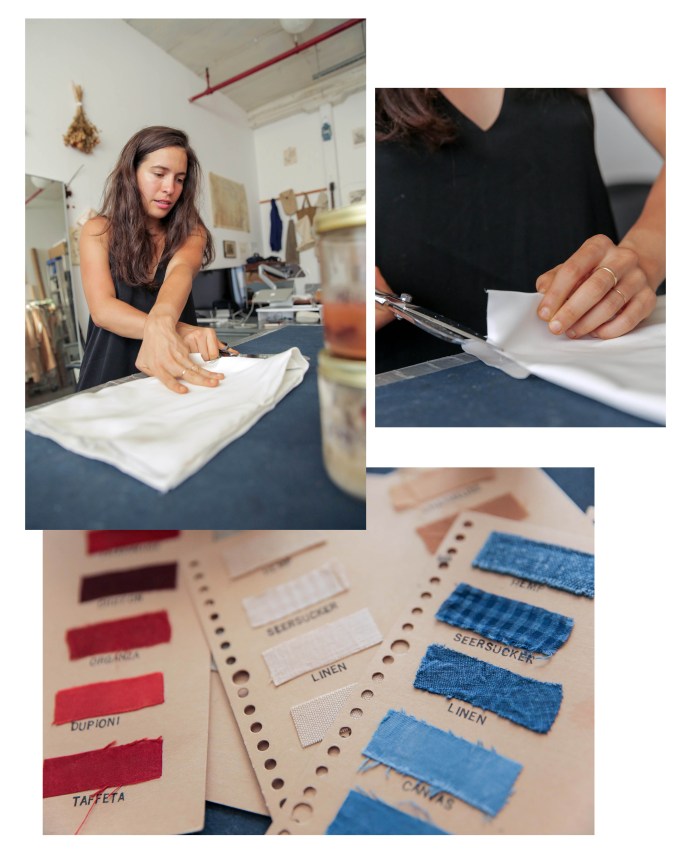
These experiments have become a key ingredient to Fragmentario’s recipe, inspiring a horde of strangers and friends from all parts of the world to send her bottles of water from their respective countries. Pombo then examines the water with a pH test strip that shows her the chemical levels contained in the water. It’s her way to play with natural ingredients to develop new colors without relying on synthetic dyes. The crowdsourced water is also a way for Pombo to reach artists who would otherwise be intimidated by science. Her engineering background has come in handy with this project, as she helps other people see the scientific side of fashion.
Pombo is also reaching out to her community with a series of natural dyeing workshops that allow other artists and newbies alike to dive into this technique head-on. Her two upcoming workshops will take place at the New York Botanical Garden and at her forthcoming presentation Rosa Terráqueo at A/D/O’s Brooklyn space on September 28.
As she continues to develop new techniques of natural dyeing, it’s clear her passion for design goes further than fashion, and Fragmentario is just the beginning.
